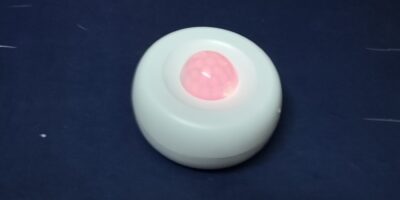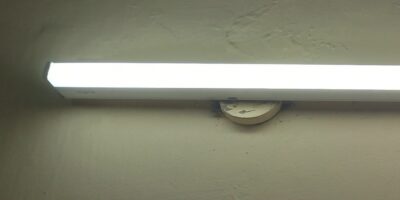
A smart home isn’t complete without taking into account the livability of your indoor environment. To increase your comfort, you should be able to keep track of the pollutants from outdoor as well as indoor sources. Suddenly, the concept of indoor air quality (IAQ) monitoring has started gaining ground this year. Here will cover why it is needed along with some of the best consumer IoT gadgets in this space.
Why Is Indoor Air Quality (IAQ) Important?
When we talk of air pollution, you may instantly think of large factories or automobile emissions. Indeed, 90 percent of the world’s population is living in an environment where they are exposed to unhealthy levels of airborne pollutants. Although it’s not been extensively studied, indoor air pollution is as important to know as outdoor air pollution.
You might be familiar with the widely-used World Air Quality Index (AQI) website. You can easily gather the latest PM 2.5, carbon monoxide (CO) and Ozone (O3) levels for individual locations through a simple visual map. These metrics have been designed to the 2016 US Environmental Protection Agency (EPA) standard. Any reading above 150 is unhealthy for the average person.

With any rise in haze levels, your local authorities will share an alert advisory for you to stay indoors as much as possible, as any negative health implications are quite real. Think of respiratory diseases, such as asthma or chronic bronchitis, or cardiovascular diseases which are a leading cause of death worldwide.
However, it’s also true that the average person already spends around 90 percent of their time indoors. So the more relevant question to ask yourself is this: “Is air pollution worse inside my home than outside?” The only way to find out is through testing.
According to the US Environmental Protection Agency (EPA), such a negative scenario is actually true, and the concentration of indoor air pollutants are often two to five times higher than outdoor air pollutants. When local authorities issue a stay-at-home advisory for PM 2.5 levels crossing 150, it doesn’t take into account the possibility that the testing device might show a reading like “292” inside your home.

Outdoor pollution and human activities such as cooking, smoking tobacco, and burning incense or candles, all come together to bring about these abnormal spikes in indoor air pollution. Nowadays, many modern homes are using synthetic materials, such as polyurethane in the furniture, carpeting, and wall materials. These are also major sources of gaseous polluting.
Volatile organic compounds (VOC), radon, lead, asbestos, plastics, dust, and molds are another concern. When we add all this together, the acceptable level of indoor air pollutants inside the home is characterized by a parameter called “indoor air quality (IAQ).” The same airborne pollutants and gases measured at an outdoor location can be checked within the indoor premises.

The pollution levels inside the home can be pretty serious during winters. During a pandemic-like situation, it can even be life-threatening. The only way to stay on top is to have a regular IAQ assessment and mitigate the pollution levels.
Consumer IoT Devices Used in Indoor Air Monitoring and Purification
Gone are the days of bulky air pollution monitoring instruments (although they are still widely used in industry). In the IoT age, monitoring air quality is really at the touch of a button. Many consumer IoT products for IAQ are characterized by portability and convenience, OLED displays, and connectivity with smartphone apps. For ease of use, they should continuously run for several days after a single recharge.

The Airthings Wave Plus series of appliances is an award-winning gadget, which measures radioactive Radon levels, CO, and VOCs from sources including cleaning products, furniture and paint. It also gives a breakdown of the VOCs into sources, such as formaldehyde (used in children’s toys), benzene and other gses emitted from incandescent sources. It’s one of the best products on the market for keeping track of gaseous pollutants inside the home. However, it doesn’t measure PM particles.

If you want a more versatile device, SAAM’s upcoming S-series appliances (SP4 and SC4) offer additional capabilities. Apart from measuring particulate matter (ranging from PM-1 to PM-10 with intermediate stops at PM-2.5 and PM-4), SAAM S-series also claims to handle LP gas, carbon dioxide (CO2), hydrocarbons, hydrogen cyanide, formaldehyde, and more. However, this device does not claim the capability to measure Radon levels. The product will be launched in the consumer market very soon and is the first device of its kind which not only measures indoor air pollutants but can also rapidly detect smoke and fire.
Once you detect indoor air pollution levels, what is the next step? How do you bring down those levels to a normal limit? That’s where you can use a good portable air purifier such as Luft DUO by LUFTQI, a Taiwan-based company. It’s a filterless air purifier which works by neutralizing mold reproduction through decomposition of its cell structure.

Apart from the portable products, there is LG’s PuriCare range of “whole house” air purifiers, which gives the pollution status in your home environment on a scale of “violet” (polluted) to “green” (clean).

Although the desire for “breathable air” has been with us forever, the concept of indoor air quality (IAQ) has only recently started to become a serious concern for consumers. In this article, we covered how the air quality of smart homes can be improved through the latest IoT gadgets. All the aforementioned products have been introduced recently this year and may become household names in consumer IoT gadgets for IAQ monitoring.
On a related note, if you’re a SmartThings developer, you should check out our extensive tutorial on how to get weather, pollen, and air quality monitoring every time you step out of your home.







